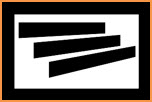Basement drywalling is raising popularity among the home owners. There are several critical points against it. Many experts says that it is not going to stay long and not at all capable enough to replace plaster. Call it Drywall or Sheet rock or wallboard or gypsum wallboard or plaster board. Drywall is a construction material which is used to make many things, especially Ceilings and Wall. Drywall is made up of Gypsum.
Advantages of basement drywalling
Instead of plaster these days’ people prefer Drywall. There are several reasons for this.
- It is quick and easy to install. It takes only couple of days to install drywall.
- It is highly durable.
- It is easy to repair.
- It is used to conceal steel beams and complete masonry walls above the ceiling of basement.
- It is fire resistant.
There are several types of Drywall manufactured by Gypsum companies. These Drywalls are installed according to the situation. They also manufacture and supply a regular drywall which is common to several situations. Which one suits your basement? Let us find out. Before that, take the measurements of your basement to estimate how many sheets you exactly need. Whatever be the type of drywall, you must finish it properly with paint and other additives.
- Joint compound: It is used for finishing work.
- Drywall mud: It is applied over paper drywall tape. Drywall seams are very popular while hanging the drywall sheets. With the help of this tape you can easily conceal the seams.
Types of basement drywalling
- Moisture Resistant Drywall: You can apply them in basement bathroom, basement kitchen and basement laundry.
- Fire resistant Drywall: It is highly recommended for garages and rooms with furnaces.
- Abuse resistant Drywall: Often used in commercial buildings and basement workshops.
Three simple steps to finish basement drywall installation
This task is not that difficult as it seems to be. In fact Drywalls are manufactured to solve the labor and skill problem related with the plastered wall. The steps are quite simple and quick. Take help of the manual provided with the drywall sheet by the manufacturers.
Step 1: Cutting
- Lay your Drywall sheets on a leveled and dry surface.
- Cut the drywall sheet according to your basement measurements. Cut 20 inches extra sheet which goes in folding. Make use of pencil or soap to mark the measurement. Use T-square as a guide and saw to cut the drywall sheets.
- If you want to apply the drywall to the electrical outlets then make use of a keyhole saw.
- Use circle cutter to get drywalls in curved shape.
Step 2: Hanging
Attach drywall sheets to the wood or metal studs. Hang drywall sheets horizontally to attach it to the wood studs and vertically to the metal. Apply drywall adhesive to the wood stud.
This minimizes deflection. You will require screw gun and drywall screws to fix the drywall on studs. Ideally place the screws about every four inches. It is difficult to work with metal studs but there are higher chances of wood to warp gradually.
Step 3: Finishing
- Finishing of the drywall requires tape and sand. Apply three layers of mud, one layer of drywall tape and sandpaper.
- Form a four inches wide tape coat by spreading the joint compound on the drywall sheet with the help of a finishing knife. Now work along the joints and apply tape there with the help of mud to fix it at proper place.
- Now apply block coat that is second coat of mud. Again apply it in same way.
- Final coat is skim coat. For this you have to use 10-12 inches knife instead of 6” in above two coatings. This is the final coat so spread it such that it forms smooth and leveled surface. Before sanding leave it for 24 hours to dry.
Sanding: You will require a pole sander and 120-grit sandpaper to sand the mud. A proper sanding means it is absolutely devoid of tape and mud bulges on the surface. It should be perfectly smooth and even. Sand each and every seam and nail. Sanding can damage your eyes and lungs. Therefore, take precautions while sanding. Wear mask and goggles.
Save your drywall from moisture and humidity. It smells like rotten egg when combined with humidity.
Some disadvantages of drywall
- Drywall does not meet the requirement of basement wall which is very important for further durability. Drywall is fragile and most of the times it is prone to accidental holes.
- Drywall is also highly prone to various types of stains.
- It is an organic material thus molds get attracted to it most commonly.
With all the above pros and cons of basement drywalling, it is up to you to go for it or not.
Check out plumbers

